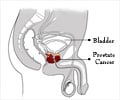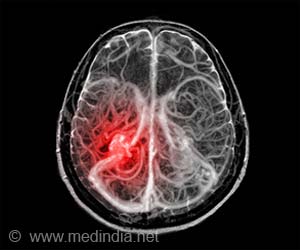Novel protein found to enhance effect of Vitamin E and suppress prostate cancer
Researchers have identified a protein that disrupts an important signaling pathway in prostate cancer cells, thereby suppressing the tumor. The protein also enhances the retention of Vitamin E that limits the proliferation of cancer cells.
The researchers of the present study are the first to describe the role of a protein known as alpha tocopherol associated protein or TAP in prostate cancer. Expression levels of TAP are significantly lower in prostate cancer than in a normal prostate.Restoration of the levels of the protein in individuals with prostate cancer can be extended to have a therapeutic effect. The approach however would be technically very difficult. Therefore, the present practical solution is to investigate whether specific substances can increase the expression of TAP.
TAP is a binding protein that performs important cellular functions. The high levels of TAP in normal prostate cells suggest that TAP facilitates the transport of vitamin E into prostate tissue and helps retain high concentrations of the vitamin in the cells.
In prostate cancer cells, the researchers showed for the first time that TAP supports the retention of vitamin E. It was also found that TAP increases vitamin E's capacity to control the rapid growth of the cancer cells.
A cell can send messages from its surface to the nucleus through a set of chemical reactions known as a signaling pathway. The disruption of such a pathway by TAP has been found to suppress cancer cell growth. The pathway involves two proteins, phosphatidylinositol 3-kinase and constitutively active Akt, both of which play an important role in the initiation and progression of prostate cancer.
If research continues to show the important role of TAP, we could use TAP expression levels to better assess and predict the aggressiveness of the cancer. We may even be able to use TAP levels to predict whether a patient will respond to treatment.
Advertisement


![Prostate Specific Antigen [PSA] Prostate Specific Antigen [PSA]](https://www.medindia.net/images/common/patientinfo/120_100/prostate-specific-antigen.jpg)








